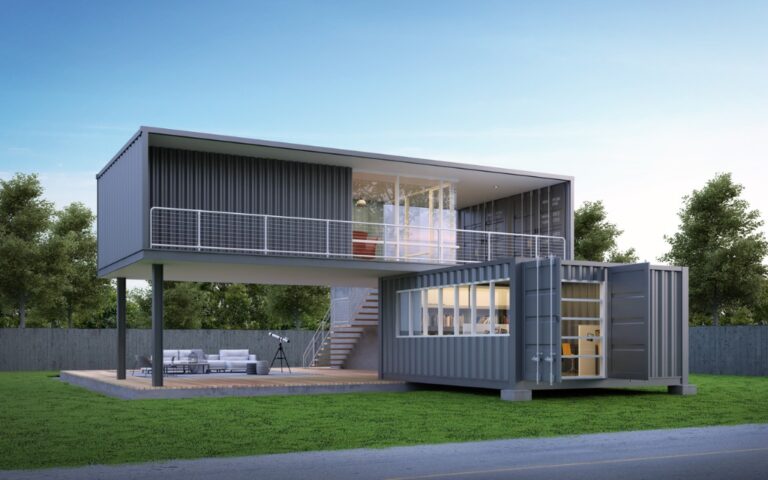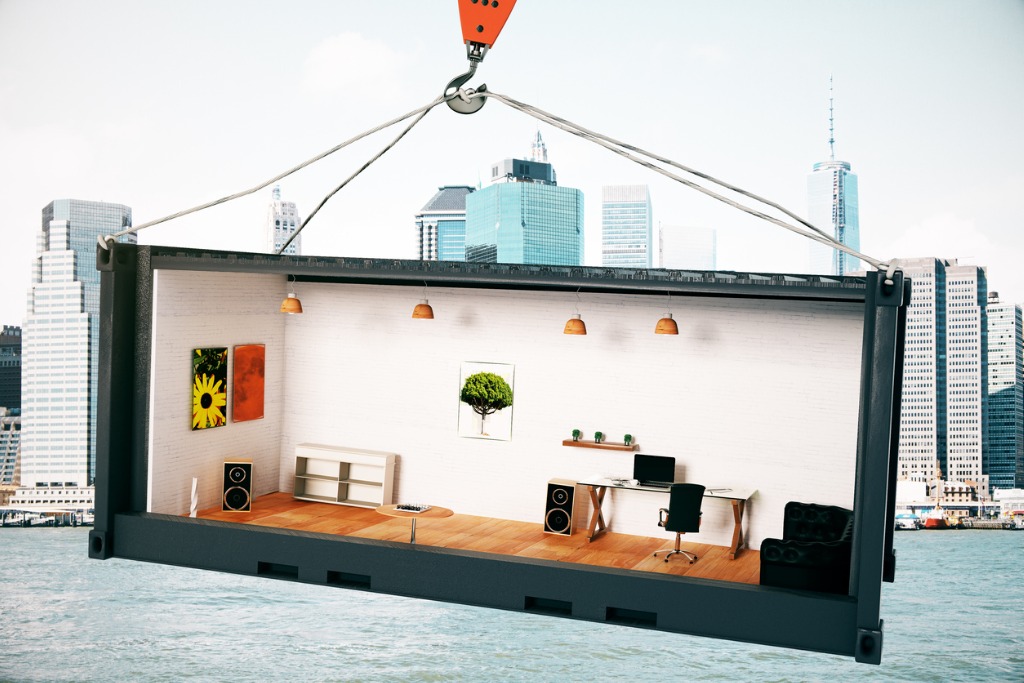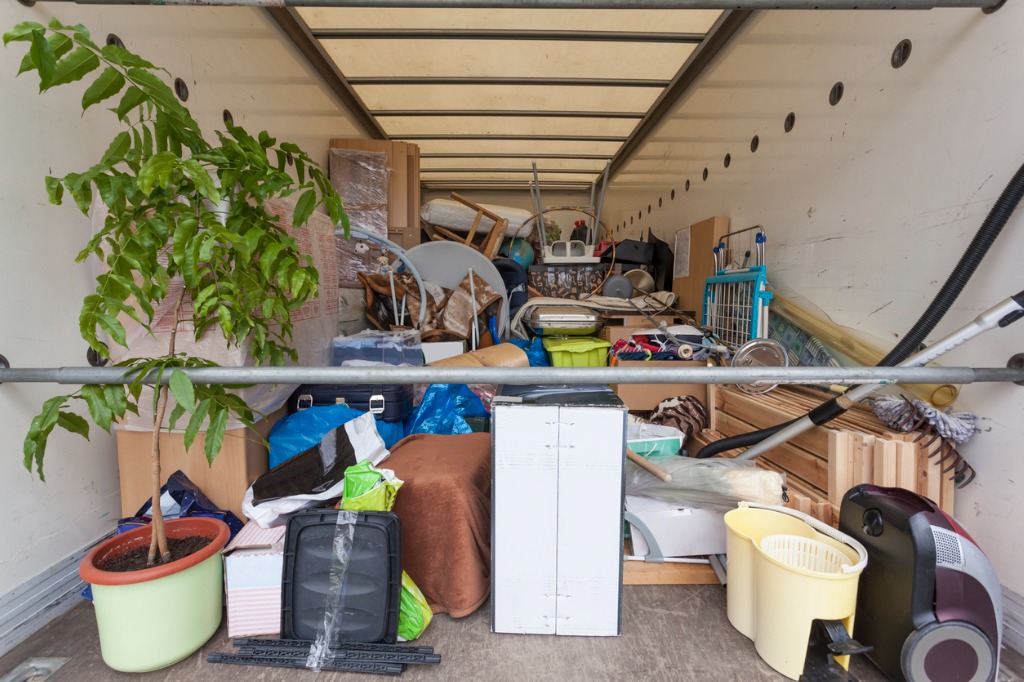
Photo by Ninoon via iStock
Shipping container homes are becoming increasingly popular because of their low cost and high versatility. They’re easy to construct and maintain and provide plenty of storage space. However, there are also some drawbacks to building one. Here are some pros and cons of shipping container living.
The video below, created by Eco Snooki, outlines the top five pros and cons of shipping container homes.
This article expands on ten pros and cons of shipping container living for you to consider before hopping on this trend.
Table of Contents
Pros of Shipping Container Living
Are shipping container homes worth considering? There are several benefits associated with shipping container houses. Here are five advantages they offer.
It is Tough and Durable
Steel shipping containers are built to last and are designed to withstand extreme temperatures and pressures. When building reinforced concrete structures, durable steel reinforcements are used to support the building.
A typical container weighs about 20 tons and can withstand extreme temperatures and high winds. In addition, a container will hold its shape after cutting through multiple layers. For example, if you cut through five layers of reinforcement, the container will retain its original shape and strength.
Costs are Predictable With Shipping Container Living

Photo by FluxFactory via iStock
Building with shipping containers can save you money compared to traditional construction methods. In addition to saving you time and labor, they’re typically less expensive than brick, wood, steel, concrete, or even vinyl siding. Plus, they’re recyclable, reusable, and often require little maintenance.
Constructing offices and homes with shipping containers can save people a lot of money. A single container can cost about $1,400 and up to $4,500, depending on size and condition. Prices vary widely based on where you live, how much work you want to be done, and what type of container you choose.
Speedy Construction Process
Shipping containers are quick and easy for builders to construct. It takes just three days to assemble one. And because they’re cheap, they make great temporary housing options.
A shipping container home is much faster than building a traditional house. This is mainly because most shipping containers are already made. So, you won’t have to wait for months while a contractor builds your home.
Shipping Container Living Provides Creative Freedom
These homes are extremely versatile and can be customized in almost every way imaginable. So whether you’re building a home office, studio, garage, shop, or workshop, shipping containers provide plenty of space and flexibility.
For example, you can choose various flooring options, including wood, tile, carpet, vinyl, bamboo, cork, and even grass. In addition, you can add windows, install skylights, build walls, add cabinets, and much more.
You can also customize the exterior appearance of the home. Several companies offer custom paint jobs, siding materials, roofing systems, and more. Whatever style you want, there are plenty of options available.
It Offers Mobility

Photo by peshkov via iStock
Containers are gaining popularity because they allow their owners to pack up their lives and move them wherever they please (assuming their home can be taken apart, of course). Whether it’s moving into a smaller space or relocating to another city, containers make it easier than ever.
Cons of Shipping Container Living
Shipping container homes are becoming increasingly popular because they offer many advantages over traditional housing options. But there are some disadvantages too. Here are five things you should know about shipping containers.
Container Homes Have a Shorter Lifespan
One disadvantage of container homes is that they don’t last as long as traditional homes. According to Confoot statistics, a typical shipping container home will last about 10-15 years with acute care. This makes it a good choice for temporary housing but not a great option for homeowners looking to buy a place to live.
Container Homes Offer Less Living Space

Photo by typhoons via iStock
Container homes are small, compact buildings that maximize interior space while minimizing exterior footprint.
The average size of a container home is about 2,500 square feet. This is much smaller than the average American house, which measures 3,600 square feet. However, it’s still bigger than most apartment buildings, which might measure around 800 square feet.
Another option is to buy many containers together to create a larger home. If you do, you’ll likely gain some extra living space.
It Might Have Stored Noxious Chemicals
Some shipping containers might pose a danger because of what was once stored in them. Noxious chemicals – though usually in steel barrels – could be present in trace amounts. Or, if a barrel inside a shipping container leaked, there could be far more than trace amounts of dangerous chemicals.
You Need Insulation for Shipping Container Living

Photo by Gökçen TUNÇ via iStock
If you’re looking to build a shipping container house, there are many things to consider. One of those things is insulation. You’ll want to ensure that you use a material that won’t leak moisture into the walls. If you don’t do that, mold could start growing inside your container home due to high internal temperatures.
Spray foam insulation is a good choice because it doesn’t require much maintenance. However, it does produce some greenhouse gasses during production. Fiberglass and cellulose insulation are better choices, environmentally speaking. However, they need more maintenance.
It Will Need Reinforcement
During heavy snowfall, it’s likely that the roof of the shipping container can sag. This often happens when corner castings in the structure are not durable enough.
A reinforced wall will prevent sags in the roof. Sloping roofs are also an efficient way to reinforce the corners.
The Bottom Line on Shipping Container Living
The possibilities are endless. With shipping containers, you can make your life easier, save money, and enjoy the outdoors.
Constructing a house out of shipping containers is a thrilling endeavor. Depending on your preference, you can DIY it or seek professional assistance. Either way, it’s a great way to save money and live green.